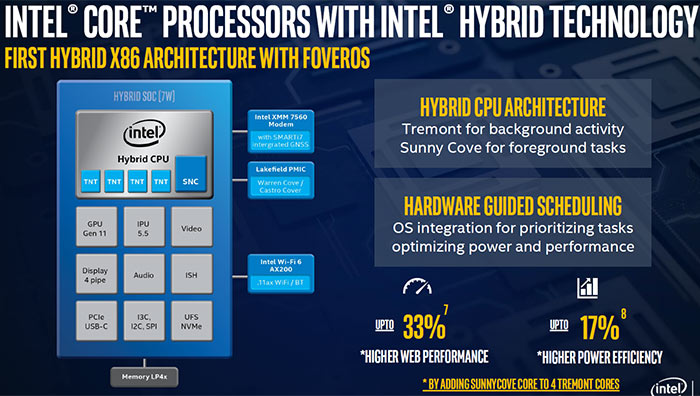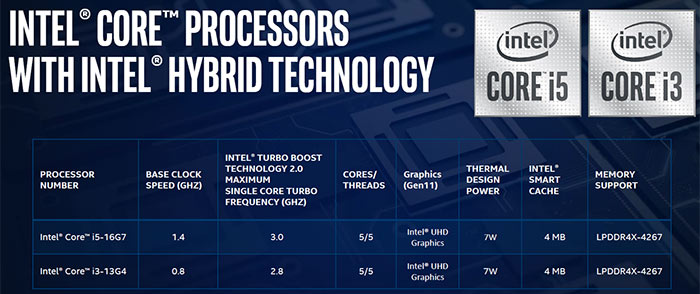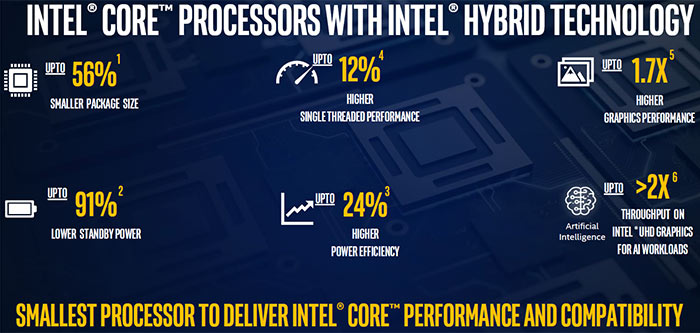We have seen snippets of information about Intel Lakefield previously. Probably the most notable stories leading up to today were the announcement of the Microsoft Surface Neo powered by Lakefield (in 2019), a tech teaser from Intel from February 2020, and Samsung launching its Galaxy Book S in a Lakefield version last month. Now Intel has decided to share more about Lakefield and its possibilities. Happily both known Lakefield designs, the Core i5-L16G7, and Core i3-L13G4, are now detailed on the Intel Ark (here is a side by side comparison). These chips come with up to 8GB LPDDR4X 4267 POP RAM on board offering up to 24GB/s bandwidth.

To refresh your memories, Lakefield is a hybrid CPU design built using Intel's Foveros 3D packaged technology. It is hybrid because the CPU uses a big/LITTLE CPU core configuration with a 10nm Sunny Cove core to take on more intense workloads and foreground applications. Meanwhile the four power-efficient Tremont cores "balance power and performance optimisation for background tasks," says Intel. That makes it 5C/5T. Foveros means that these CPU cores can be vertically stacked with the memory on top. Check out the diagram below for a cross section view of a Lakefield chip.

Sticking the memory on top of double stacked CPU players might be problematic if this wasn't a small and thin (12 x 12 x 1mm) 7W SDP chip. In all of Intel's Lakefield slides shared in this article its performance comparisons are against a 14nm Intel Core i7-8500Y processor from Q1 2019. The 8th gen Amber Lake i7-8500Y features 2C/4T with base/boost of 1.5GHz/4.2GHz in a 3.5 to 7W configurable TDP.

Intel leverages its Gen11 graphics architecture here with support for up to four external 4K displays, fast media conversion, AI-enhanced video stylisation, analytics and image resolution upscaling. Another feature highlight is the built-in support for Intel Wi-Fi 6 (Gig+) and Intel LTE solutions.

A few claims that Intel has made for Lakefield, beyond the performance comparisons above, are that; it enables an up to 47 per cent smaller motherboard size, it delivers as low as 2.5mW of standby SoC power, and it is the first Intel processor to feature native dual internal display pipes.
Expect to see the first Lakefield devices soon, with the Samsung Galaxy Book S Lakefield version available this month, and Lenovo's ThinkPad X1 Fold later in the year.
More morsels
HardwareLuxx editor Andreas Schilling shared a nice clear die shot of the compute die of a Lakefield processor. However, for some reason, Intel saw fit to send Legit Reviews editor Nathan Kirsch a Lego version of the new chip.






